AI optimization technology continues to advance, but at the same time, the application and abuse of this technology are also becoming rampant.
Written by: Heart of the Metaverse
The latest released "2025 Artificial Intelligence Index Report" shows that the field of artificial intelligence is maturing: AI optimization technology continues to progress, but at the same time, the application and abuse of this technology are also becoming rampant.
The report was released on April 7, 2025, initiated by Stanford University's Human-Centered Artificial Intelligence Institute (HAI) and led by an AI Index Steering Committee composed of interdisciplinary experts from academia and industry.
The report continuously tracks several key developments in the field of artificial intelligence, mainly including: annual major technological breakthroughs, new benchmark testing records, trends in generative AI investment, application trends in the education sector, and the legislative process of technology regulation.
Here are 10 key points from the report:
01. Breakthrough in Small Model Performance
In 2022, the smallest model that could achieve 60% accuracy in the MMLU multi-task language understanding benchmark test was the PaLM with 540 billion parameters.
By 2024, Microsoft's Phi-3-mini model with only 3.8 billion parameters achieved the same performance, reducing the model size by 142 times in two years.

02. Dramatic Drop in Model Usage Costs
For models that reached GPT-3.5 level (64.8% accuracy) in the MMLU test, the cost per million token query plummeted from $20 in November 2022 to $0.07 in October 2024 (Gemini-1.5-Flash-8B model), a decrease of over 280 times in 18 months. The annual drop in LLM inference prices for different tasks ranges from 9 to 900 times.
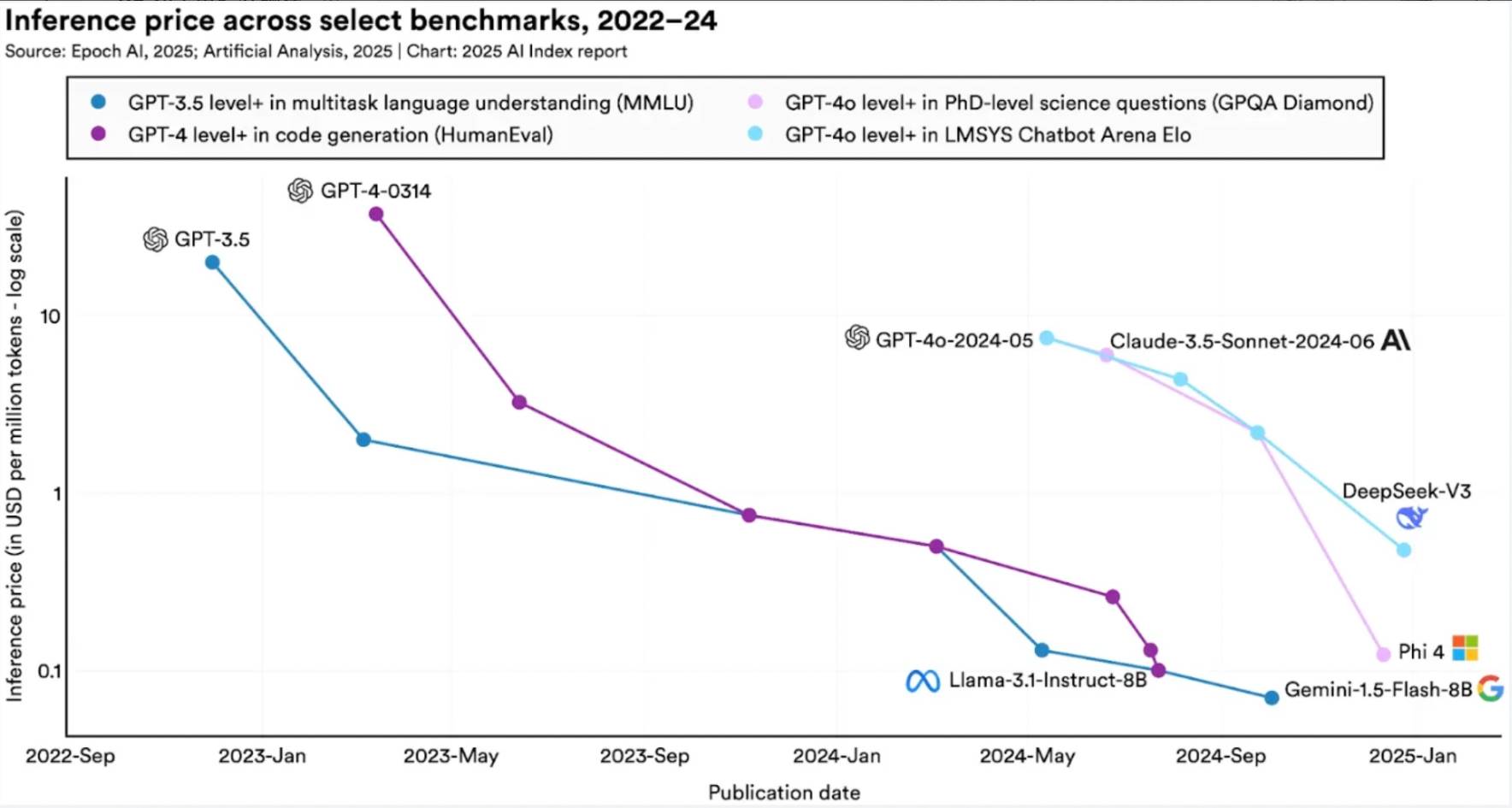
03. Chinese Models Catching Up
Although the U.S. still maintains an advantage in the number of top AI models (40 important models in 2024 vs. 15 in China / 3 in Europe), Chinese models are quickly closing the gap in quality.
In core benchmark tests like MMLU and HumanEval, the performance gap between Chinese and American models has shrunk from double-digit percentages in 2023 to mere fractions in 2024. China continues to lead the world in the number of AI papers published and patents filed.
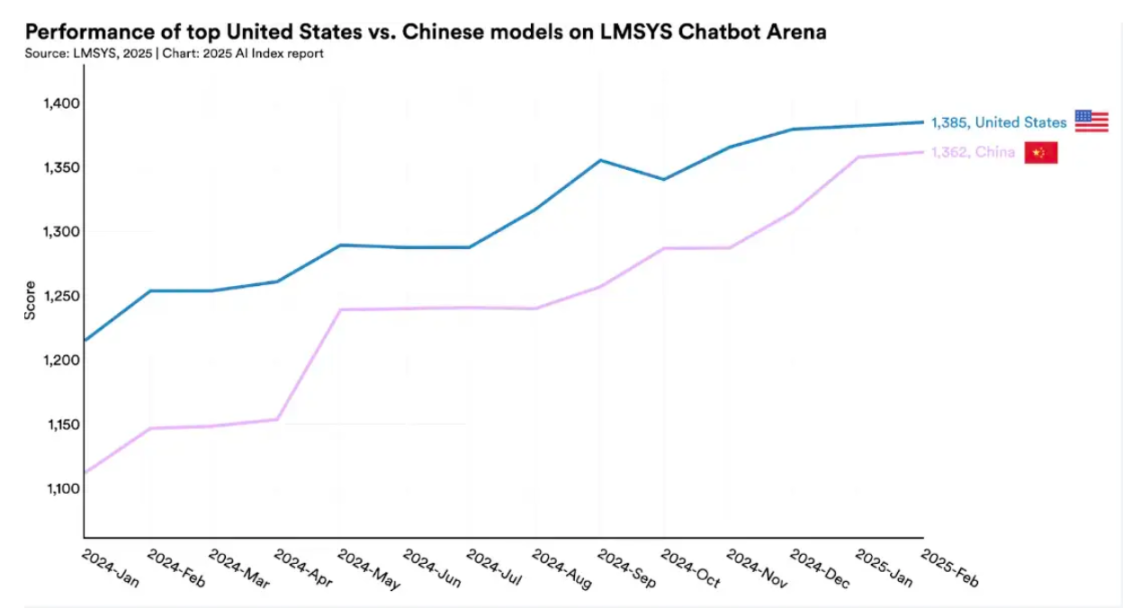
04. Surge in AI Abuse Incidents
According to the AI Incidents Database, the number of AI-related harm incidents reached 233 in 2024, a historic high, increasing by 56.4% compared to 2023. Typical cases include deepfake private images and chatbots suspected of causing youth suicides. While this is not the full picture, the surge in issues is alarming.
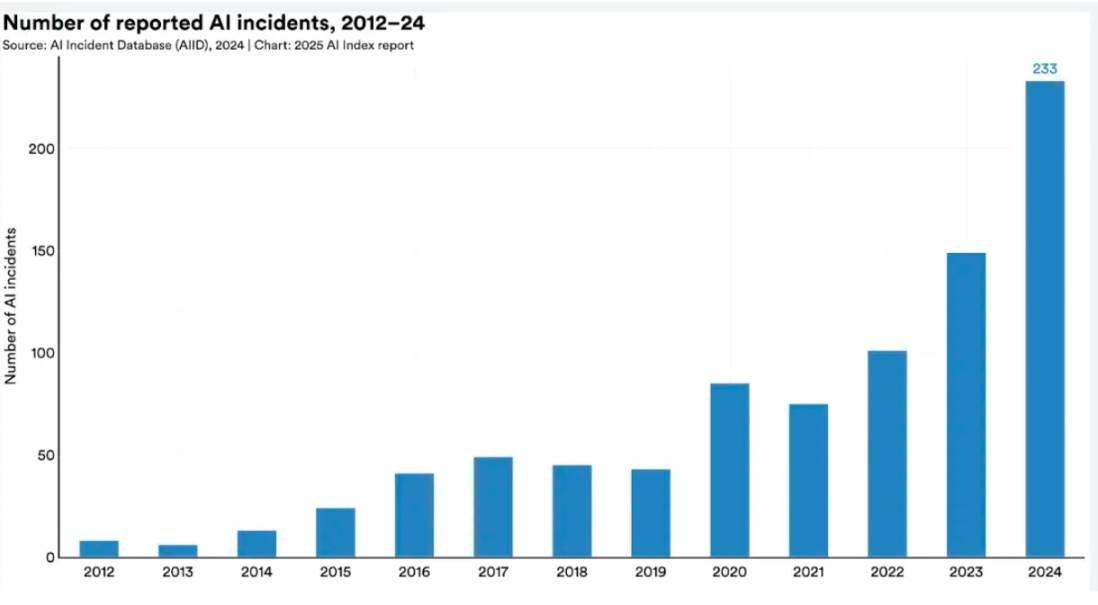
05. Practical Breakthroughs in Agents
AI Agents are showing initial potential. The RE-Bench launched in 2024 established strict benchmarks for evaluating agents on complex tasks: in short-term tasks (2 hours), top AI systems outperformed human experts by 4 times; but in long-term tasks (32 hours), humans surpassed AI by a 2 times advantage.
Notably, AI has reached expert levels in specific areas (such as writing specific code) and is more efficient.
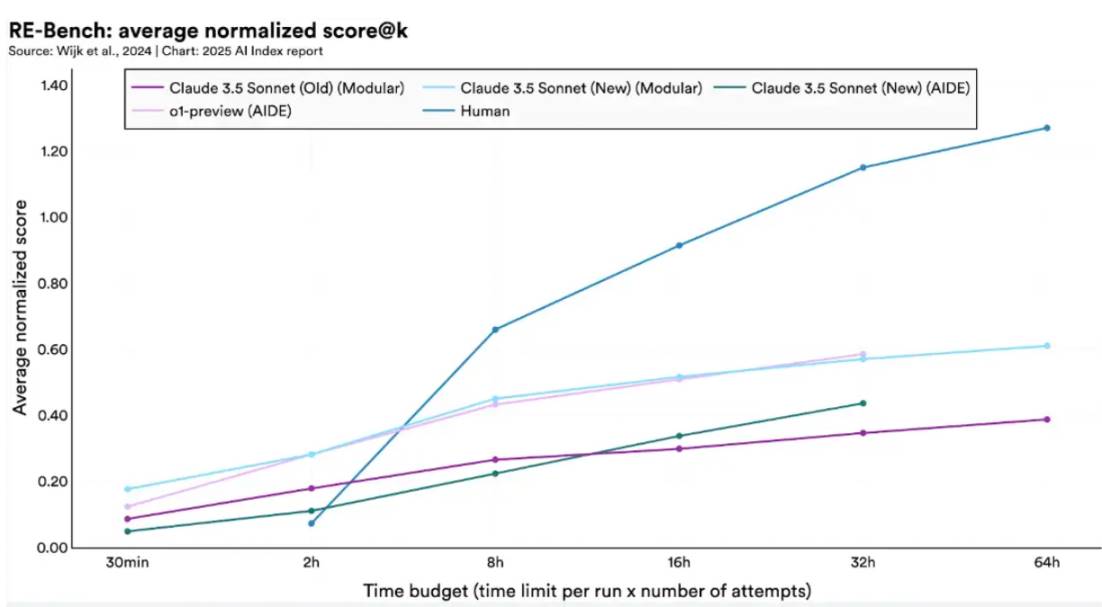
06. Surge in AI Investment
In 2024, private sector AI investment in the U.S. reached $109 billion, nearly 12 times that of China ($9.3 billion) and 24 times that of the UK ($4.5 billion).
The gap is even more pronounced in the generative AI sector: U.S. investments exceeded the combined total of the EU and the UK by $25.5 billion, further widening from $21.1 billion in 2023.
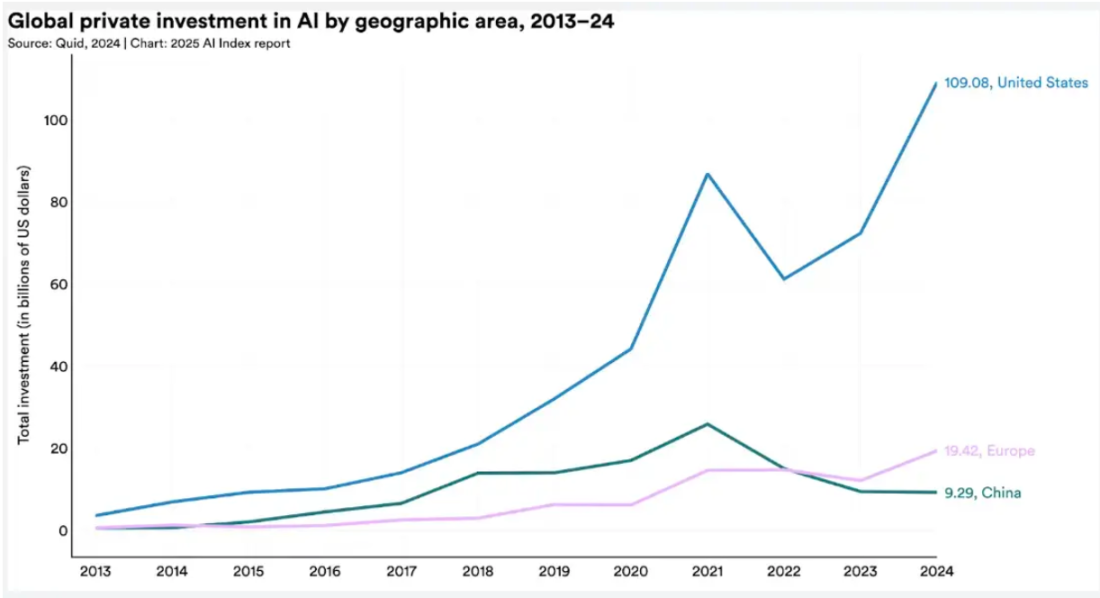
07. Companies Accelerate Adoption of AI Technology
Companies are turning to AI. In 2024, the proportion of respondents using AI jumped from 55% in 2023 to 78%. More notably, the proportion of companies applying generative AI to at least one business function doubled, soaring from 33% to 71%.
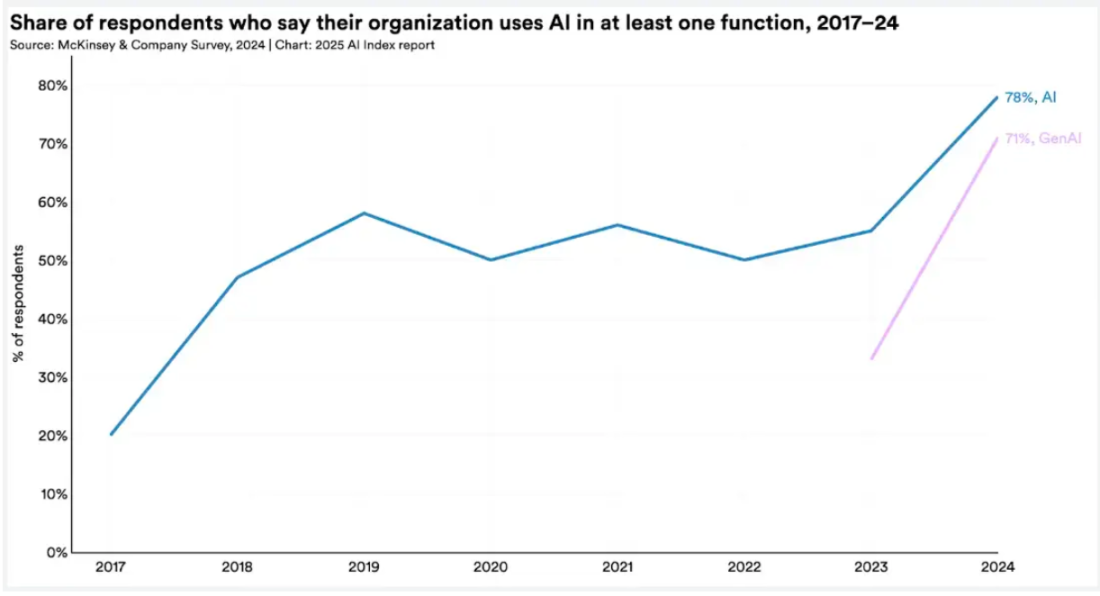
08. Explosion in Medical AI Product Approvals
The number of FDA-approved AI medical devices has seen exponential growth. Since the first AI medical device was approved in 1995, only 6 had been approved by 2015, but by 2023, this number skyrocketed to 223, demonstrating the accelerated adoption of medical AI applications.
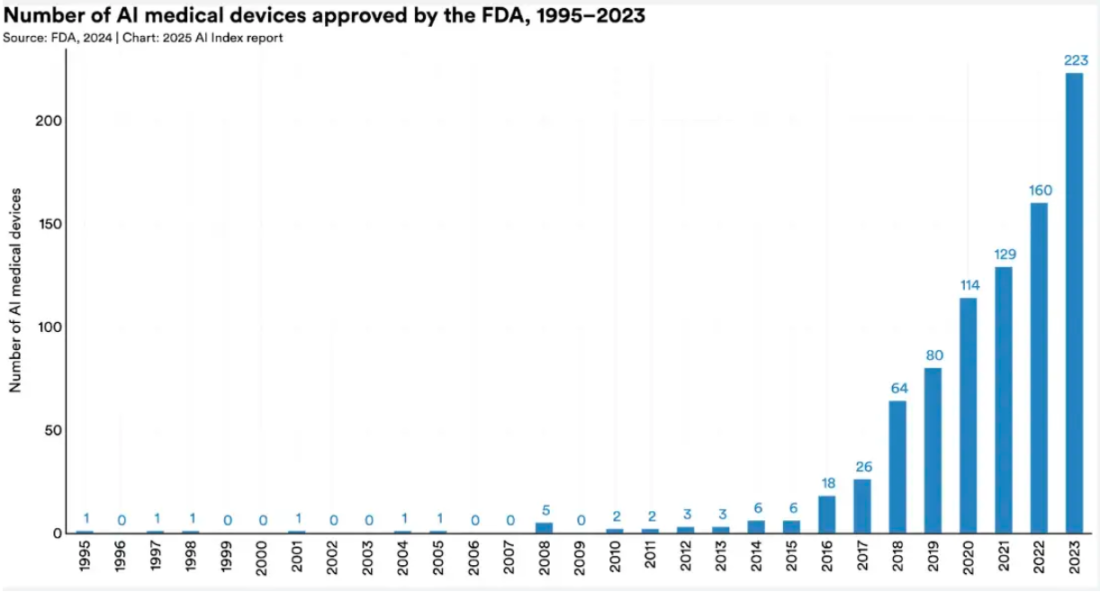
09. U.S. AI Regulation: State Governments Take the Lead
Against the backdrop of slow federal legislative progress, U.S. states are becoming the main force in AI regulation. Only 1 state-level AI-related bill was passed nationwide in 2016, but this number increased to 49 by 2023.
In the past year, this number has doubled to 131. Although the number of AI bills proposed at the federal level has also increased, the actual passage rate remains low.
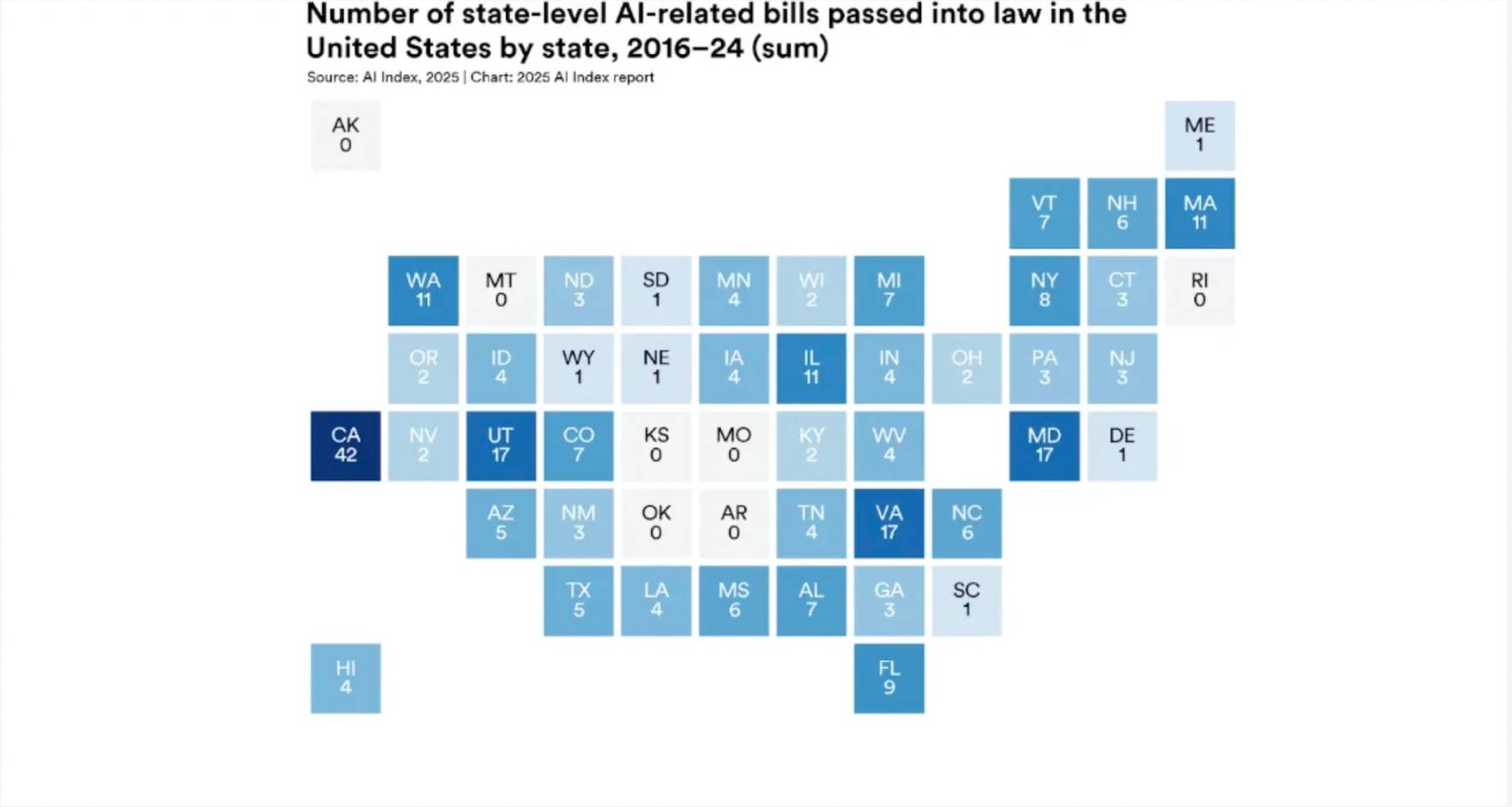
10. Asia Holds a More Optimistic View of AI
Global acceptance of AI shows significant regional differences: in China (83%), Indonesia (80%), and Thailand (77%), the vast majority believe that AI products are more beneficial than harmful; while in Canada (40%), the U.S. (39%), and the Netherlands (36%), the proportion of people holding this optimistic view is less than half.
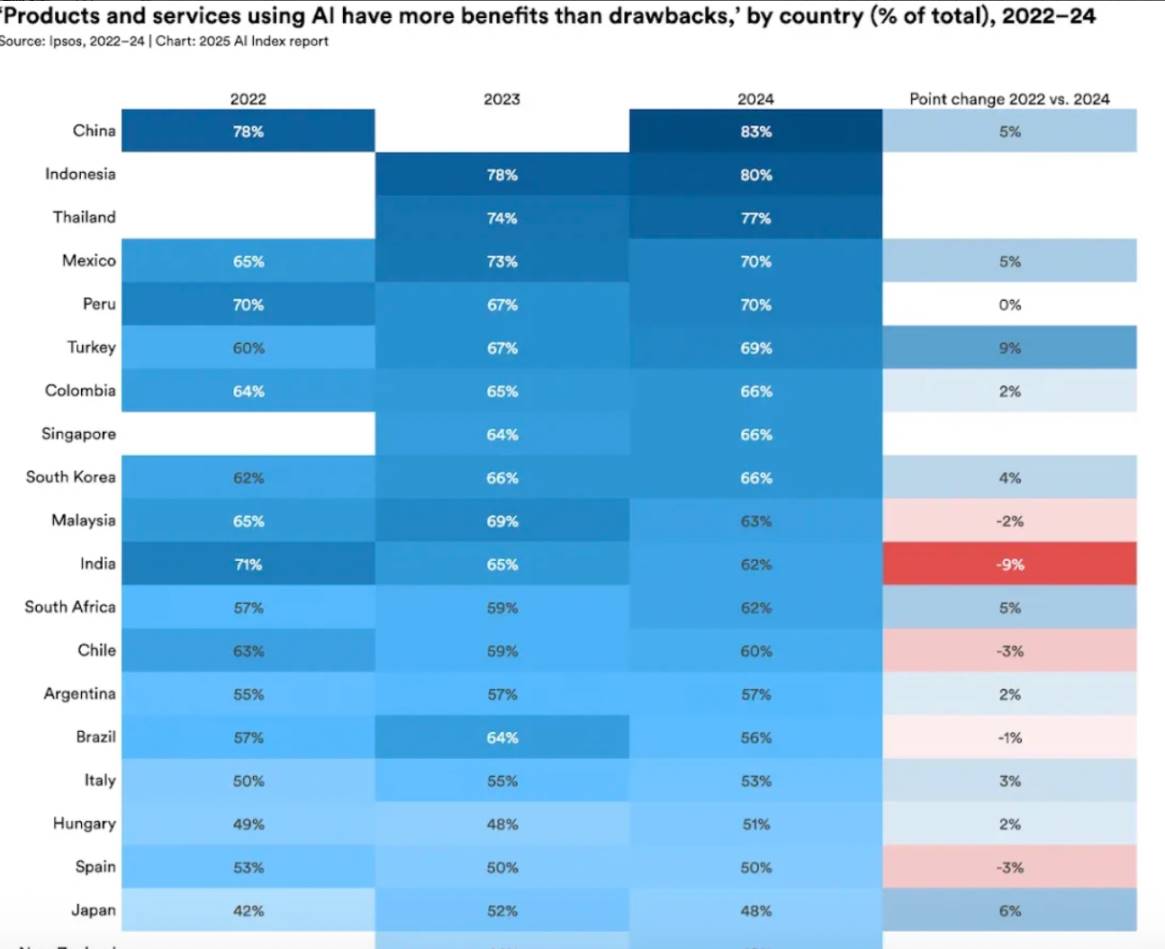
免责声明:本文章仅代表作者个人观点,不代表本平台的立场和观点。本文章仅供信息分享,不构成对任何人的任何投资建议。用户与作者之间的任何争议,与本平台无关。如网页中刊载的文章或图片涉及侵权,请提供相关的权利证明和身份证明发送邮件到support@aicoin.com,本平台相关工作人员将会进行核查。




